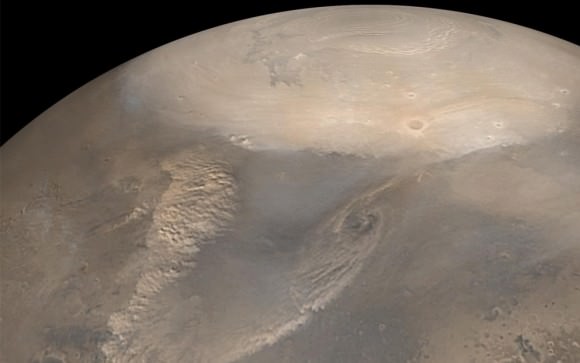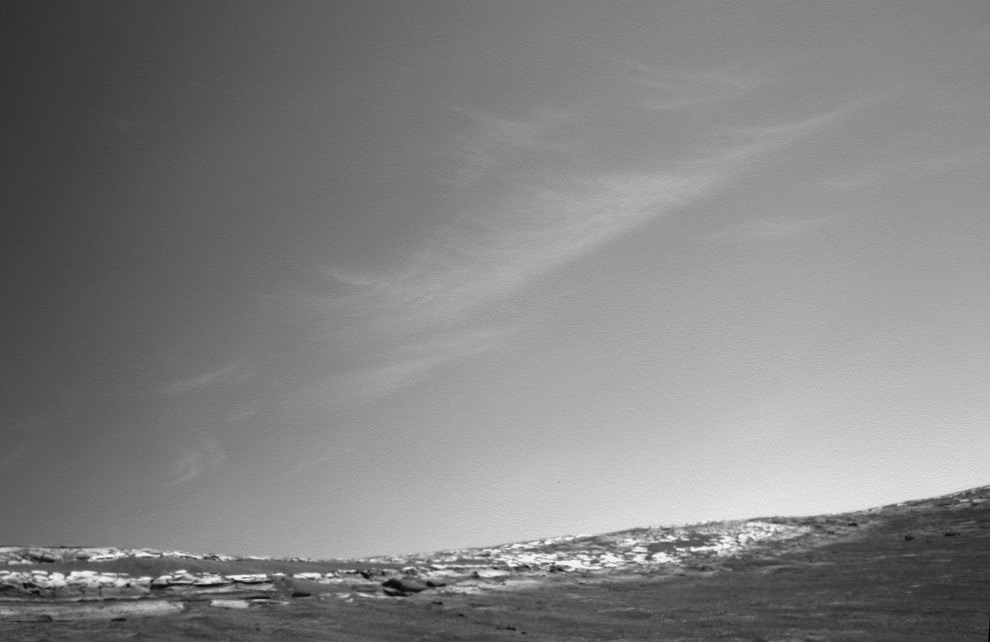Predicting the weather here on Earth is never an easy thing, but predicting it on Mars may be ever trickier. Such is the argument presented by a recent study concerning “macroweather” patterns on the Red Planet, a new regime for understanding how planetary environments work.
When it comes to describing the climate of a planet, two important concepts come into play. First, there’s weather, which covers day-to-day changes due to fluctuations in the atmosphere. Second, there’s climate, which is more stable and subject to change over the course of decades. Macroweather, the latest addition to the game, describes the relatively stable periods that exist between short-term weather and long-term climate.
For those of us dwelling here on planet Earth, these are familiar concepts. But researchers say this same three-part pattern applies to atmospheric conditions on Mars. The results of a new paper, published today in Geophysical Research Letters also show that the Sun plays a major role in determining macroweather.

The scientists chose to study Mars because of the wealth of data it has provided in recent decades, which they then used to test their theory that a transitional “macroweather” regime exists on a planet other than Earth. They used information collected from the Viking Mars lander mission from the 1970s and 1980s, and more recent data from the Mars Global Surveyor.
By taking into account how the sun heats Mars, as well as the thickness of the planet’s atmosphere, the scientists predicted that temperatures and wind would fluctuate on Mars similar to how they fluctuate on Earth. However, this transition from weather to macroweather would take place over 1.8 Martian days (about two Earth days), compared with a week to 10 days here on Earth.
“Our analysis of the data from Mars confirmed this prediction quite accurately,” said Shaun Lovejoy, a physics professor at McGill University in Montreal, Canada, and lead author of the paper. “This adds to evidence, from studies of Earth’s atmosphere and oceans, that the sun plays a central role in shaping the transition from short-term weather fluctuations to macroweather.”

The findings also indicate that weather on Mars can be predicted with some skill only two days in advance, compared to 10 days on Earth.
“We’re going to have a very hard time predicting the weather on Mars beyond two days given what we have found in weather records there,” said co-author Jan-Peter Muller from the University College London Mullard Space Science Laboratory in the UK, “which could prove tricky for the European lander and rover.”
This research promises to advance scientists’ understanding of the dynamics of Earth’s own atmosphere, and could potentially provide insights into the weather of Venus, Saturn’s moon Titan, and possibly the gas giants Jupiter, Saturn, Uranus, and Neptune.
As always, in learning about other planets and their climates, scientists are finding that the planets of our Solar System may have more in common with Earth than previously thought. Because of this, studying these other worlds will inevitably help us to better understand our own.


A Martian weather prediction? There will again be a global scale dust storm on Mars, probably during the lifetime of the Curiosity rover? The last global dust storm on Mars occurred in 2001 with others happening in 1971 (Mariner9) and in 1977 (Vikings 1 & 2) . Global storms do not occur every Martian year and are infrequent BUT with Curiosity’s expected long life there is a good chance we’ll get to see such a planetary conflagration, from the ground!
Aqua4U. I agree with you – good chance. Curiosity using the RTG will survive a dust storm but its Opportunity that is at risk. If Oppy starts with a pile of dust on its panels when it happens, then it could spell doom. Despite the memory problems Oppy, I think, could make it to 2020, maybe longer. Isn’t Opportunity a case of “they don’t make them like they use to”? 🙂